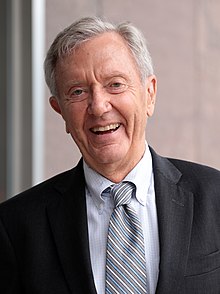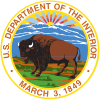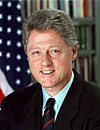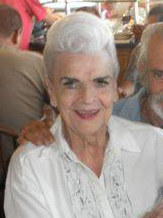
Rose Mofford was an American civil servant and politician of the Democratic Party who served as governor of Arizona from 1988 to 1991. Her career in state government spanned 51 years, beginning as a secretary and working her way up the ranks to become the state's first female secretary of state, serving from 1977 to 1988, and the state's first female governor.

Bill Clinton's tenure as the 42nd president of the United States began with his first inauguration on January 20, 1993, and ended on January 20, 2001. Clinton, a Democrat from Arkansas, took office following his victory over Republican incumbent president George H. W. Bush and independent businessman Ross Perot in the 1992 presidential election. Four years later, in the 1996 presidential election, he defeated Republican nominee Bob Dole and Perot again, to win re-election. Clinton was limited to two terms and was succeeded by Republican George W. Bush, who won the 2000 presidential election.
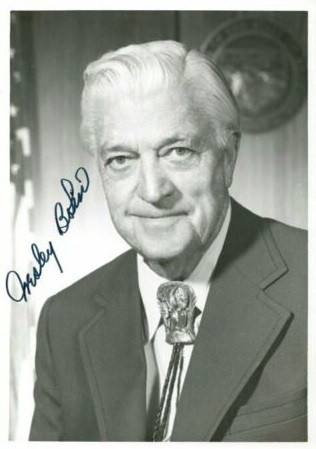
Harvey Wesley Bolin was an American Democratic Party politician who served as the 15th governor of Arizona between 1977 and 1978. His five months in office mark the shortest term in office for any Arizona governor. Prior to ascending to the Governorship, Bolin was the longest serving Secretary of State of Arizona, serving 28 years from 1949 until he succeeded to the governorship in 1977 following the resignation of his predecessor.

Morris King Udall was an American attorney and Democratic politician who served as a U.S. representative from Arizona from May 2, 1961, to May 4, 1991. He was a leading contender for the 1976 Democratic presidential nomination. He was noted by many for his independent and liberal views.

Kenneth Lee Salazar is an American lawyer, politician, and diplomat who is the United States ambassador to Mexico. He previously served as the 50th United States Secretary of the Interior in the administration of President Barack Obama from 2009 to 2013. A member of the Democratic Party, he previously was a United States Senator from Colorado from 2005 to 2009. He and Mel Martínez (R-Florida) were the first Hispanic U.S. senators since 1977; they were joined by Bob Menendez in 2006. Prior to his election to the U.S. Senate, he served as Attorney General of Colorado from 1999 to 2005.
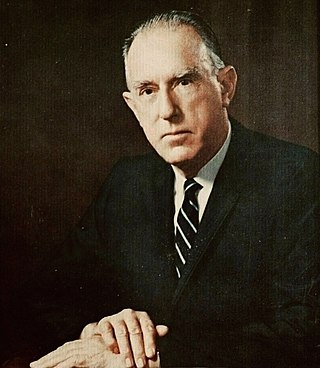
Paul Jones Fannin was an American businessman and politician. A Republican, he served as a U.S. Senator from Arizona from 1965 to 1977. He previously served as the 11th governor of Arizona from 1959 to 1965.

Raúl Héctor Castro was a Mexican American politician, diplomat and judge. In 1964, Castro was selected to be U.S. Ambassador to El Salvador, a position he held until 1968 when he was appointed U.S. Ambassador to Bolivia. In 1974, Castro was elected to serve as the 14th governor of Arizona, and resigned two years into his term to become U.S. Ambassador to Argentina. Prior to his entry into public service, Castro was a lawyer and a judge for Pima County, Arizona. He was a member of the Democratic Party.

The Democratic Governors Association (DGA) is a Washington, D.C.-based 527 organization founded in 1983, consisting of U.S. state and territorial governors affiliated with the Democratic Party. The mission of the organization is to provide party support to the election and re-election of Democratic gubernatorial candidates. The DGA's Republican counterpart is the Republican Governors Association. The DGA is not directly affiliated with the non-partisan National Governors Association. Meghan Meehan-Draper is currently the DGA's executive director, while Tim Walz is the current chair.

Andrew Leo Bettwy, a Republican, served as Arizona State Land Commissioner from 1970 to 1978 under four Arizona governors.

David J. Hayes is an American attorney and legal scholar who serves in the Biden Administration as Special Assistant to the President for Climate Policy. Hayes has led White House work on clean energy deployment issues, climate resilience and greenhouse gas emission reduction and carbon sequestration initiatives. Hayes also has assisted in developing and implementing the climate-related provisions included in the Infrastructure Investment and Jobs Act and the Inflation Reduction Act.
John A. ("Jack") LaSota is a former Arizona Attorney General (1977–1978). LaSota also served as Bruce Babbitt's Chief of Staff when the former was governor of Arizona. He is a lobbyist for the firm LaSota & Peters, P.L.C.
President Bill Clinton made two appointments to the Supreme Court of the United States, both during his first term.
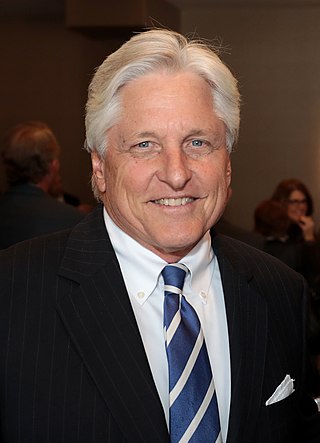
Fred Price DuVal is an American businessman, civic leader, education leader and author. He is president of DuVal and Associates, a senior advisor to Dentons Law, Chairman of Excelsior Mining, a Director of DriveTime Auto Group and is Chairman of the Arizona Board of Regents where he is serving his second term. He recently completed a term on the Board of AGB, the Association of Governing Boards. He was the Democratic nominee for Governor of Arizona in the 2014 election, but was defeated by then-State Treasurer Doug Ducey. He is a former Deputy Chief of Protocol and also former senior White House staff to President Clinton responsible for coordinating federal policy with the nations Governors. He is the author of two books, "Calling Arizona Home" and "Irons in the Fire".
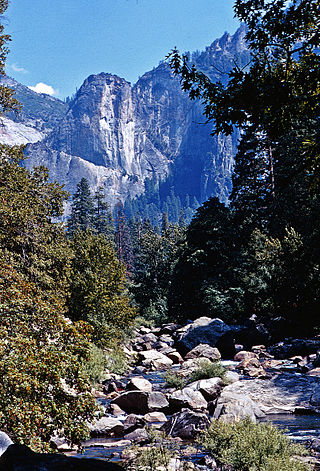
Conservation in the United States can be traced back to the 19th century with the formation of the first National Park. Conservation generally refers to the act of consciously and efficiently using land and/or its natural resources. This can be in the form of setting aside tracts of land for protection from hunting or urban development, or it can take the form of using less resources such as metal, water, or coal. Usually, this process of conservation occurs through or after legislation on local or national levels is passed.

Andrew David Hurwitz is a senior United States circuit judge of the United States Court of Appeals for the Ninth Circuit. He served as a justice of the Arizona Supreme Court from 2003 to 2012.
Harriet "Hattie" Coons Babbitt is an attorney and former diplomat, who served as United States Ambassador to the Organization of American States (OAS) from 1993 to 1997, and as Deputy Administrator of the United States Agency for International Development (USAID) from 1997 to 2001. She has practiced law in both Arizona and Washington, D.C. Before commencing the practice of law, she clerked for the then Chief Justice of the Arizona Supreme Court, Jack D.H. Hayes in 1972-1973.

The 1986 Arizona gubernatorial election took place on November 4, 1986, for the post of Governor of Arizona. Republican Evan Mecham, who defeated Burton Barr for the Republican nomination, defeated the Democratic nominee and State Superintendent Carolyn Warner and independent candidate Bill Schulz.

The 1978 Arizona gubernatorial election took place on November 7, 1978, for the post of Governor of Arizona. Democrat Bruce Babbitt defeated Republican nominee Evan Mecham. Babbitt was the former Attorney General of Arizona, but after the death of Governor Wesley Bolin, Babbit became governor. Bolin himself ascended to office from the position of Secretary of State, meaning his replacement, Rose Mofford was not eligible to the office as she was not elected. This drama of exchanging office would continue after Babbitt's term came to an end, as Mofford would become governor and succeeded Evan Mecham, Babbitt's challenger, in 1988.

George Thomas Frampton Jr. is an American attorney, environmentalist, and government official who served as Chair of the Council on Environmental Quality. He is currently a co-founder of an environmental advocacy non-profit, Partnership for Responsible Growth. He cowrote a book on Watergate and has authored newspaper columns on subjects including environmental issues and ballot access for independent candidates.

The 33rd Arizona State Legislature, consisting of the Arizona State Senate and the Arizona House of Representatives, was constituted in Phoenix from January 1, 1977, to December 31, 1978. The legislature met during the terms of three Arizona Governors. When it was constituted, Raúl Héctor Castro still had two years remaining on his only term in office as Governor of Arizona. When Castro left the office to become Ambassador to Argentina in October 1977, he was succeeded by Wesley Bolin, Arizona's Secretary of State. Arizona's constitution mandates that the Secretary of State is first in line of succession to the office of Governor. However, Bolin died in office five months later, on March 4, 1978, and was succeeded by Bruce Babbitt, who was then the Attorney General. Bolin was not succeeded by his replacement, Rose Mofford, because she had been appointed, not elected to the office. Succession fell to the next in line, Babbitt. Both the Senate and the House membership remained constant at 30 and 60, respectively. The Republicans made inroads into the Democrat lead in the Senate, picking up two seats, although the Democrats maintained a 16–14 edge in the upper house. In the lower chamber, the Republicans increased their majority by 5 seats, giving them a 38–22 margin.
